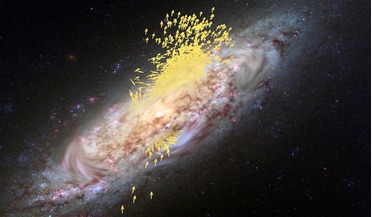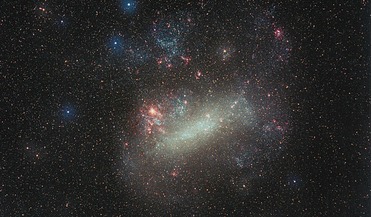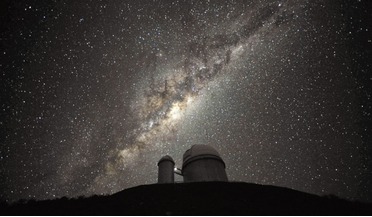 02 November 2018
Scientists unravel the formation history of the Milky Way
02 November 2018
Scientists unravel the formation history of the Milky Way
...to have been about ten times smaller than the current Milky Way, it was still large; large enough to have collections...we are now starting to unravel the formation history of the Milky Way is very exciting,” says Anthony Brown, Leiden University, The ...
 28 November 2018
A hidden giant found lurking close to the Milky Way
28 November 2018
A hidden giant found lurking close to the Milky Way
...ultra-diffuse, UDGs can still be the same size and mass as the Milky Way, but have a visible star count of only 1 percent. Galaxies such ...prolific tidal stripping from interactions with the Milky Way throughout its history. These close encounters with...
 12 January 2018
Evidence in DES map of small galaxies being eaten by the Milky Way
12 January 2018
Evidence in DES map of small galaxies being eaten by the Milky Way
... of these small neighbouring galaxies ventures too close to our galaxy, it is possible for the gravitational pull of the Milky Way to draw out tendrils of stars from the near-by galaxy, which trail behind it in a stream. Seeing evidence of stars...
 08 March 2021
New study determines best place and time to live in the Milky Way
08 March 2021
New study determines best place and time to live in the Milky Way
... of hydrogen and helium was enriched with heavier elements (oxygen, carbon, nitrogen) quickly in the center of the Milky Way, while in the periphery it was enriched more gradually, without however reaching the high metallicities of the central...
 18 June 2021
The spin of the Milky Way's galactic bar has slowed by a quarter, say researchers
18 June 2021
The spin of the Milky Way's galactic bar has slowed by a quarter, say researchers
... that wrap around it in a pattern akin to that of a Catherine wheel in motion. Surrounding the bar at the core of the Milky Way is a large group of stars known as the Hercules stream. Stars in the Hercules stream are gravitationally trapped by the...
 03 May 2017
Milky Way dark matter still as elusive as ever
03 May 2017
Milky Way dark matter still as elusive as ever
... of all matter, is set to remain mysterious a while longer, as researchers discover that a perplexing glow at the centre of the Milky Way is most likely caused by pulsars and not dark matter as previously suggested. The mysterious glow at the heart...